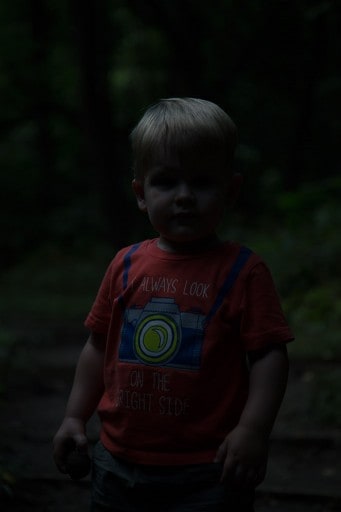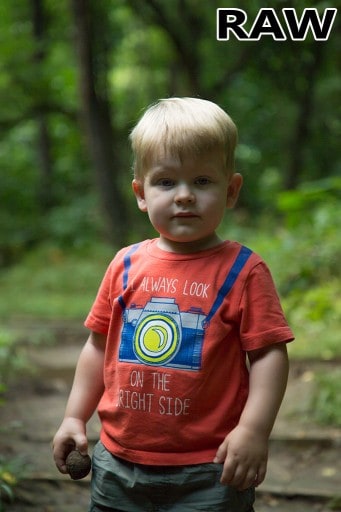I often speak of the importance of the RAW file format on EverydayHDR and just how important it is for your HDR images. However, it occurred to me that I did not have a RAW image video discussing not only how to process a RAW image in ACR, but more importantly, how to rescue an otherwise trashed photo had it been shot strictly in JPEG.
I recently took my son on a hike through the forest and brought Cameran along with us (she is my Canon 6D). I ran a little bit ahead of my son to try and snag a couple of pictures of him walking through the woods. Unfortunately, in my haste, I failed to check my settings.
In any normal circumstance this may have been acceptable, however, my son is the hardest kid to take pictures of. He is just like his father, he shys away from the camera and/or puts on a sad face. Having my settings right during a candid quick grab of him is crucial!
 He had just picked up a giant seed that he calls “balls” and was running over to show me. I dropped down to a knee and immediately took a picture. It was a split second later that he shyed away and left me hanging. To my utter dismay, I had forgotten to change my setting from the -4 Exposure Compensation from the night before… I was just about to trash it when I thought, maybe I can recover this one.
He had just picked up a giant seed that he calls “balls” and was running over to show me. I dropped down to a knee and immediately took a picture. It was a split second later that he shyed away and left me hanging. To my utter dismay, I had forgotten to change my setting from the -4 Exposure Compensation from the night before… I was just about to trash it when I thought, maybe I can recover this one.
I figured I would jump on the opportunity to show you just how much information is held in a RAW file and how you can very easily recover from even a -4 Exposure Compensation! Not only that, I will also compare it to it’s JPEG counterpart so you can see the incredible difference between the two.











I found this example of RAW & JPEG comparison in ACR very helpful. For images I consider worthwhile I like to shoot in RAW & JPEG and am always looking to improve the way I process them. Thank you for this tutorial.
Not a problem! I used to do that to as I was transitioning into RAW, but then I found that I didn’t want to miss out on the possibilities of RAW if I shot a great image in JPEG. Thanks for your feedback!